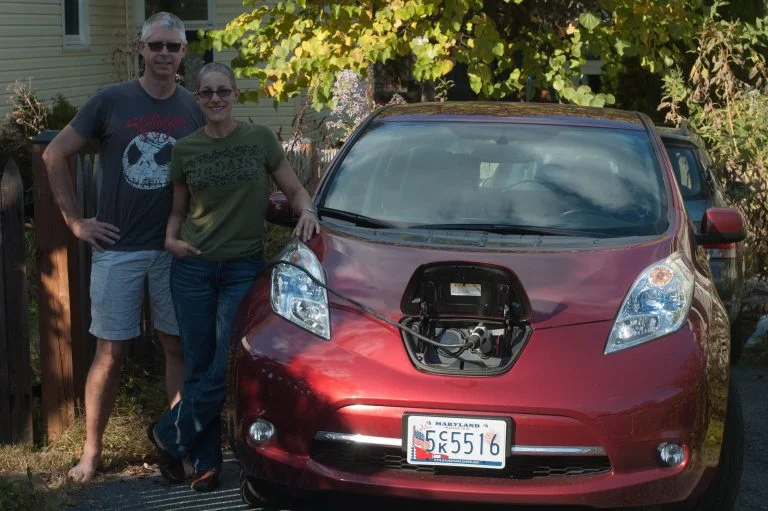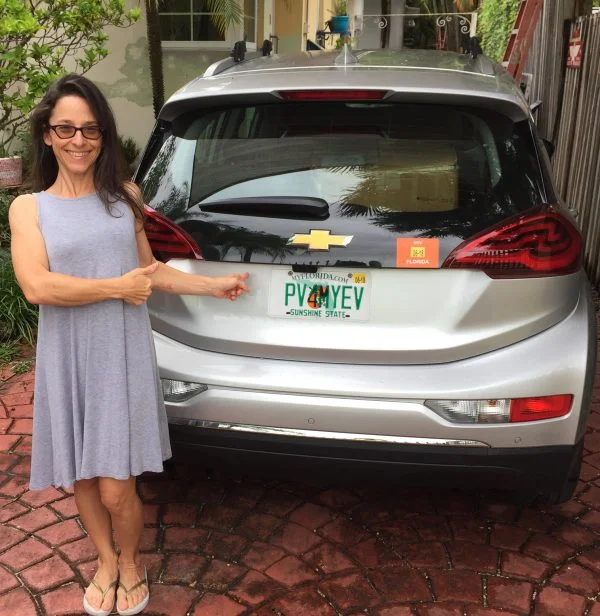Solar and electric vehicles
- Factsheet

Electric Vehicles are skyrocketing in popularity
Electric vehicles (EV) are an alternative to internal combustion engine (ICE) vehicles. EVs require less maintenance and reduce emissions.
The adoption rate of EVs in America is quickly rising. It’s no wonder!
- EVs are becoming more affordable.
- Driving ranges are longer than ever.
- A wide variety of models are available.
- Incentives for purchasing an EV are increasing, thanks to the Inflation Reduction Act.
Solar + Electric Vehicles = A Great Combo

Adding an EV is a beneficial next step after going solar. Solar owners can fuel their EVs with the electricity produced on their roof.
That’s why SUN helps people not only go solar but add EVs and EV chargers. We also fight for increased access to EVs. We advocate for state and federal incentives, progressive pilot projects, and fair charging rates.We are currently running group buy programs in multiple states that are bringing together homeowners and small businesses and giving participants the option of installing solar, a Level 2 Electric Vehicle charger, or both. Find out more about our open solar co-ops.
Learn all about EV Charging
Get the scoop on EV charging: the three types of chargers, the benefits, the financing, and more.
State Incentives for buying an EV
Electric vehicle-related incentives vary considerably across individual states. Some are rebates. Some are tax credits. Some vary by the type of electric vehicle. For information on incentives available in your state, visit: State Policies Promoting Hybrid and Electric Vehicles.
Note that SUN does not provide tax or legal advice. While we try to provide the most accurate, up-to-date information, we recommend discussing with a tax professional before purchasing an EV or charger. Visit FuelEconomy.gov for an up-to-date list of specific vehicle credit eligibility.
EVs help strengthen our energy system

The problem:
Large, centralized plants generate most of our country’s electricity. It ships across long distances to our homes and workplaces. Those thousands of miles of wires and poles are expensive. They’re also fragile and prone to failing when bad weather hits. Furthermore, meeting spikes in electricity demand is expensive with a centralized system. Demand fluctuates widely from day to day and month to month. We risk brownouts and blackouts when the demand can’t be met.
The solution:
More people are powering their homes and businesses with solar energy. This lowers the need to produce electricity in a centralized way. Electric vehicles are also playing a part in creating a more reliable and less expensive electric grid.
An EV is a battery on wheels. Certain EVs with bi-directional capabilities can store electricity for times when demand is high. This reduces strain on the grid. It makes electricity more reliable.
Many states are piloting programs to study EV owner behavior and learn how adding EVs will impact the grid. These pilot projects educate utilities, governments, and grid operators on EV customer behaviors. They also offer insights into rate design and infrastructure deployment to balance electricity loads and improve grid stability and reliability.
Solar and EV Resources
The Electric Vehicle Transportation Center
Department of Energy Alternative Fuels Data Center
Solar and EV Sizing Guide
State-specific info on solar and EVs
Get the latest on solar straight to your inbox.
Fight for your solar rights.
Everyone has the right to go solar. Spread the sunshine nationwide and in your local community by taking action, joining events, and more.